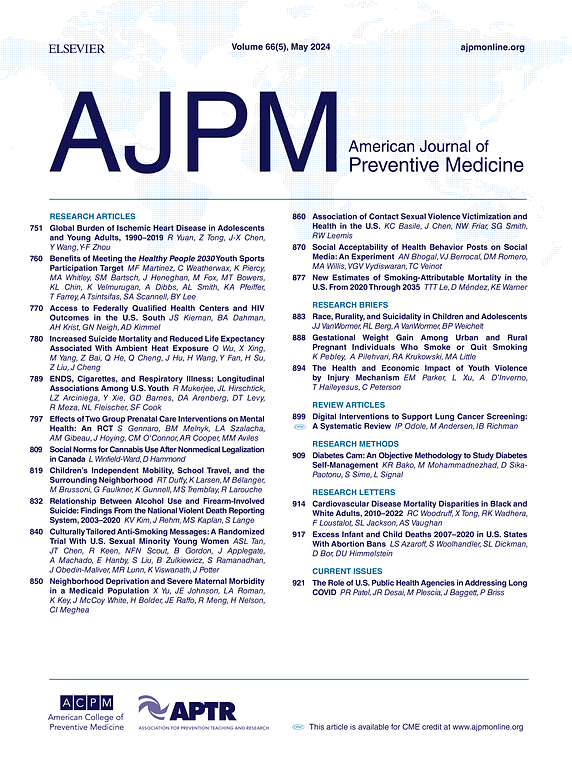The Health and Economic Burden of Employee Burnout to U.S. Employers
IF 4.3
2区 医学
Q1 MEDICINE, GENERAL & INTERNAL
引用次数: 0
Abstract
Introduction
Although an increasing number of headlines have highlighted the problem of employee burnout, an employer may not be aware of how specifically disengagement and burnout may be affecting their employees’ health and their bottom line.
Methods
To quantify the burden of disengagement and burnout among different employee types, in 2024, the authors developed a computational model representing different engagement/burnout states they could be in and different stressors within and outside the workplace on the basis of the work-life framework, which impact movement among these states and subsequent productivity losses (i.e., missed workdays and reduced productivity at work) and health effects in each state.
Results
Employee disengagement, overextension, ineffectiveness, and burnout over the course of 1 year costs an employer an average of $3,999 (95% range=$3,958–$4,299) for an average U.S. nonmanagerial hourly employee; an average of $4,257 (95% range=$4,215–$4,299) for an average nonmanagerial salaried employee; $10,824 (95% range=$10,700–$10,948) for an average manager; and $20,683 (95% range=$20,451–$20,915) for an average executive. At an average U.S. 1,000-person company (assuming average wages by employee type and an employee distribution of 59.7% nonmanagerial hourly, 28.6% nonmanagerial salaried, 10% managers, and 1.7% executives), employee disengagement/burnout resulted in $5.04 million (95% range=$5.03–$5.05 million) in costs and 801.7 (95% range=801.5–801.9) quality-adjusted life years lost annually.
Conclusions
Employee disengagement/burnout can cost employers 0.2–2.9 times the average cost of health insurance and 3.3–17.1 times the cost of training per employee.
求助全文
约1分钟内获得全文
求助全文
来源期刊

American Journal of Preventive Medicine
医学-公共卫生、环境卫生与职业卫生
CiteScore
8.60
自引率
1.80%
发文量
395
审稿时长
32 days
期刊介绍:
The American Journal of Preventive Medicine is the official journal of the American College of Preventive Medicine and the Association for Prevention Teaching and Research. It publishes articles in the areas of prevention research, teaching, practice and policy. Original research is published on interventions aimed at the prevention of chronic and acute disease and the promotion of individual and community health.
Of particular emphasis are papers that address the primary and secondary prevention of important clinical, behavioral and public health issues such as injury and violence, infectious disease, women''s health, smoking, sedentary behaviors and physical activity, nutrition, diabetes, obesity, and substance use disorders. Papers also address educational initiatives aimed at improving the ability of health professionals to provide effective clinical prevention and public health services. Papers on health services research pertinent to prevention and public health are also published. The journal also publishes official policy statements from the two co-sponsoring organizations, review articles, media reviews, and editorials. Finally, the journal periodically publishes supplements and special theme issues devoted to areas of current interest to the prevention community.
 求助内容:
求助内容: 应助结果提醒方式:
应助结果提醒方式:


